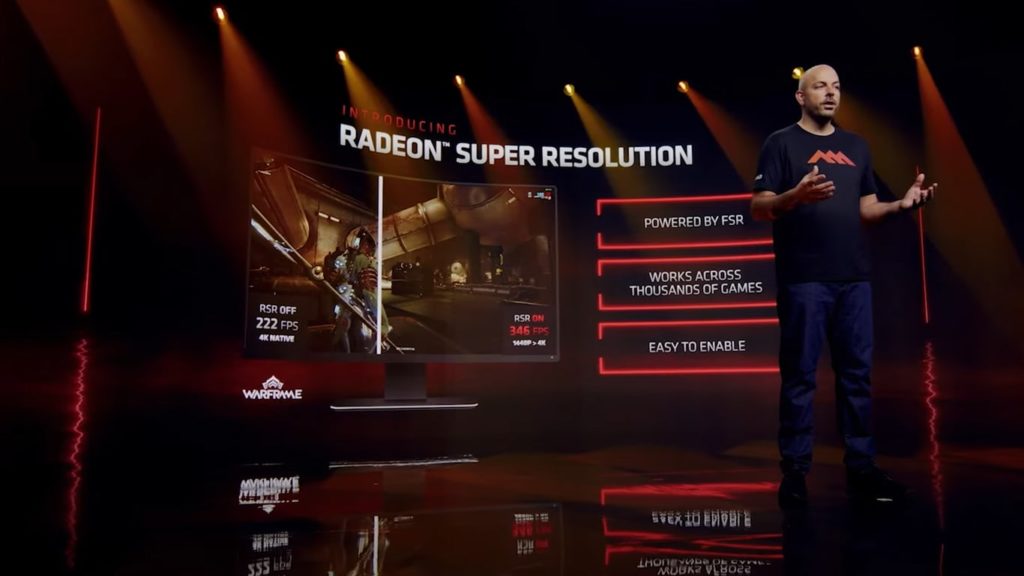
Back in 2018, when Nvidia announced their all-new RTX 20 series of graphics cards, they also introduced their AI-powered upscaling technology called Deep Learning Super Sampling (DLSS) to help gain back the frames lost due to turning ray tracing on. With time, DLSS has become so good that it is hard to tell the difference between native and upscaled footage these days.
During Computex 2021, back in July, AMD showcased its DLSS equivalent, called FidelityFX Super Resolution (FSR). It was open-source and could be implemented across any modern graphics card from either AMD or their competitor, Nvidia. This was mind-blowing, as Nvidia had restricted DLSS to their RTX series of graphics cards. The official reason was that DLSS required high-performance Tensor cores to do the AI calculations of upscaling footage.
At the core, high-end gamers with powerful cards do not utilize upscaling technologies like DLSS or FSR to get playable frame rates in games. It is players with aging and weak graphics cards who need these technologies to get their card up and running until the shortage ends, and they can finally afford some latest silicon again. Changes to that stemmed from the fact Nvidia was restricting DLSS to gamers who own a collection of high-end GPUs branded under the GeForce RTX trademark. This was quite infuriating.
AMD’s FSR took that problem away as the company’s CEO, Dr. Lisa Su showcased their upscaling technology bringing about 60% improved performance on an Nvidia GTX 1060. This was extremely impressive. But, there was another problem to be dealt with. Both FSR and DLSS need to be implemented at a software level voluntarily by the developers of the game. This took both time and money and prevented the wide-scale adaptation of the technologies.
However, AMD is back at again, and their all-new FSR-based Radeon Super Resolution takes away the need for software-level implementation. It runs at a driver level and can upscale thousands of the most popular games already. This is another step forward in the upscaling technology, and we are slowly starting to get glimpses of what the future of resolution upscaling is going to look like.
AMD’s RSR is very similar to their former FSR technology, so similar that AMD proudly advertises the earlier to be “powered” by the former. The video embedded below claims a 70% performance gain in 4K gaming. The comparison is between native 4K and 1440p video output being upscaled to be displayed on a 4K monitor.
AMD is yet to give a list of all the GPUs supported under their RSR upscaling technology. Moreover, it seems like Nvidia GPUs are being excluded this time, probably because AMD has no access to Nvidia’s drivers. The official quote on AMD’s website states that any Radeon 5000 or newer GPU will support the upscaling technology. Further, AMD Software: Adrenalin Edition 22.1.3 or newer is required to get the feature on the graphics cards.
All the healthy competition in the upscaling arms race sounds good, and both Nvidia and AMD are pushing each other forward. Intel is also entering the chat with their upcoming Xe Super Sampling (XeSS) which is debuting with the upcoming Death Stranding: Director’s Cut. That sets the release date on XeSS sometime in spring 2022.